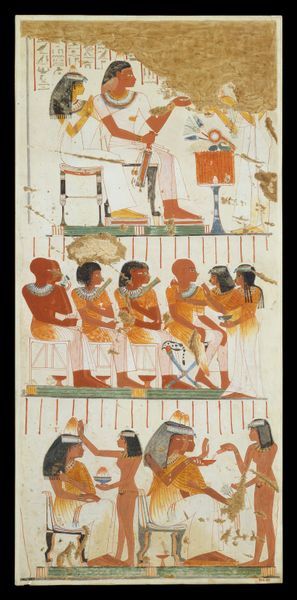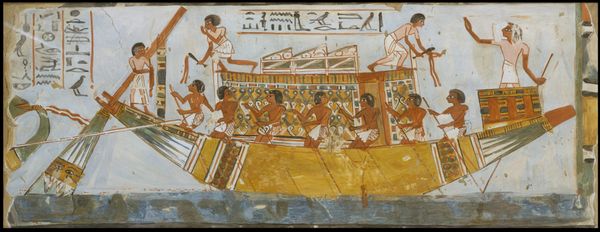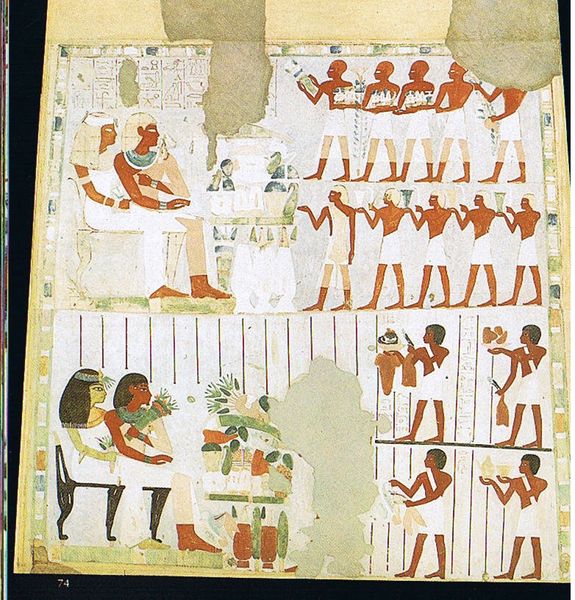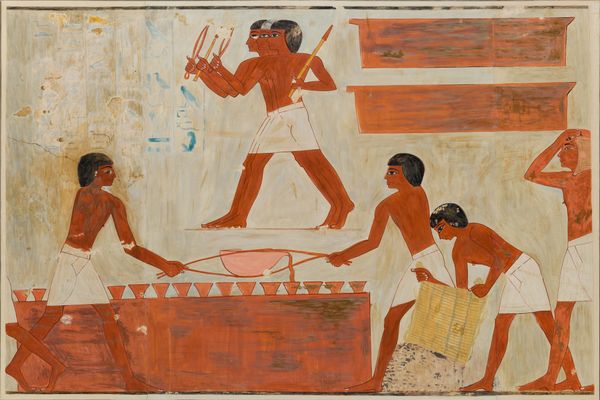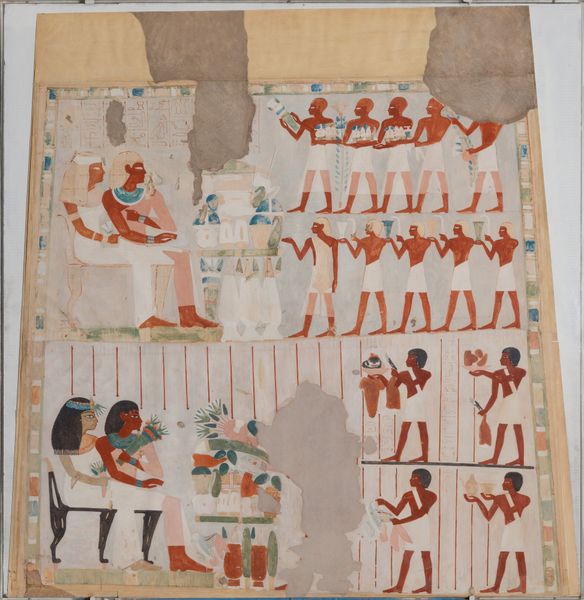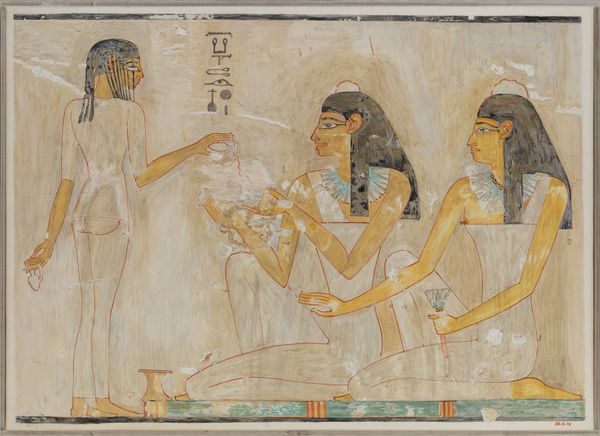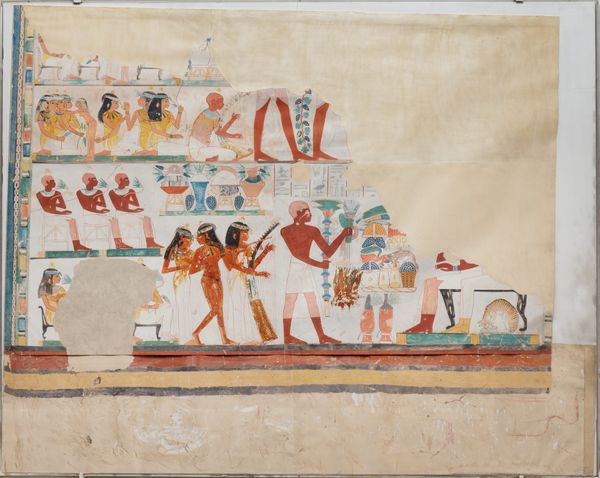
fresco
#
portrait
#
water colours
#
narrative-art
#
ancient-egyptian-art
#
figuration
#
form
#
fresco
#
egypt
#
ancient-mediterranean
#
group-portraits
#
men
#
line
#
genre-painting
#
history-painting
Dimensions: facsimile: h. 58.5 cm (23 1/16 in); w. 197 cm (77 9/16 in) Scale 1:1 framed: h. 62.2 cm (24 1/2 in); w. 200.7 cm (79 in)
Copyright: Public Domain
Curator: Let’s turn our attention to “Carpenters at Work, Tomb of Rekhmire,” dating back to 1504 BC, found here at the Metropolitan Museum of Art. This fresco by Nina de Garis Davies gives us a glimpse into the daily life of ancient Egypt. Editor: My initial thought? It’s incredibly ordered, but busy. The lines and blocks of figures give the impression of productivity, yes, but also restriction, perhaps reflecting their place within the hierarchy of labor. Curator: I think you've pinpointed something crucial. The depiction of the artisans meticulously at work provides not only a snapshot of the crafts of that time, but is deeply symbolic. The act of creation itself had religious connotations. These artisans are not simply constructing objects; they're participating in the cosmic act of bringing form out of the void, mirroring the actions of the gods. The details surrounding their work become signifiers in themselves—a tribute to craftsmanship, but more importantly, to a divinely sanctioned social order. Editor: And isn't that exactly what we're meant to see? I see the clear distinction in their labour roles depicted, their specific activities divided, reinforcing class and societal order within a visually appealing artistic framework. The image then functions as more than a documentation. It subtly communicates an endorsement of the then current social stratification, even within what appears to be a ‘genre painting’. Curator: Precisely! Though created nearly 3,500 years ago, the very techniques used embody cultural memory and continuity. Even down to the choice of vivid pigments used in fresco paintings found within these tombs, echoing a world view. It shows us an almost perfectly preserved representation and idealization of an established craft world. Editor: Well said! It pushes one to consider how depictions of labour contribute not only to artistic expression but to solidifying social roles and norms that endured. Curator: It gives us a rather potent means of reflecting on our assumptions. Editor: Exactly, and from there we understand our cultural assumptions just a little bit better.
Comments
No comments
Be the first to comment and join the conversation on the ultimate creative platform.
